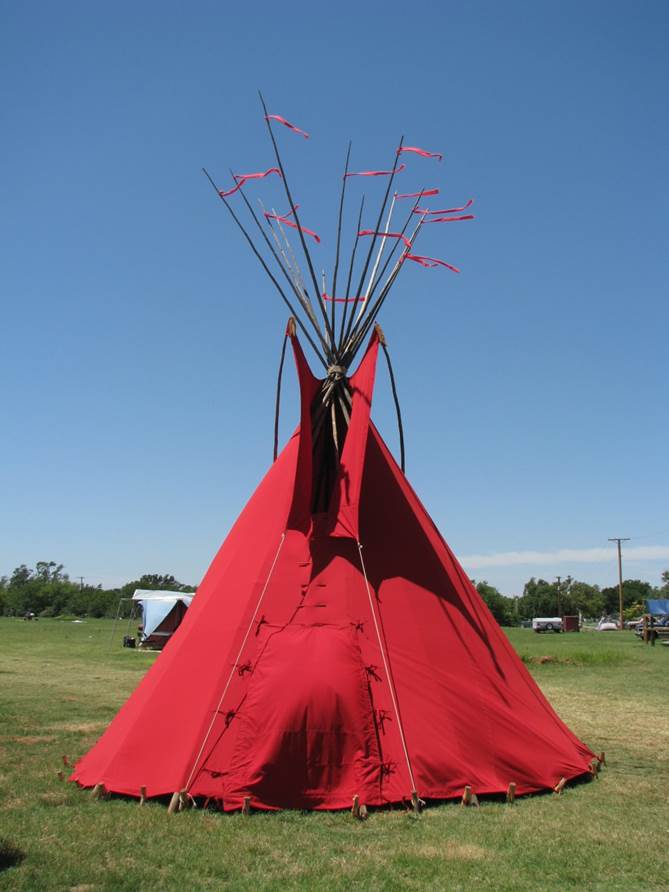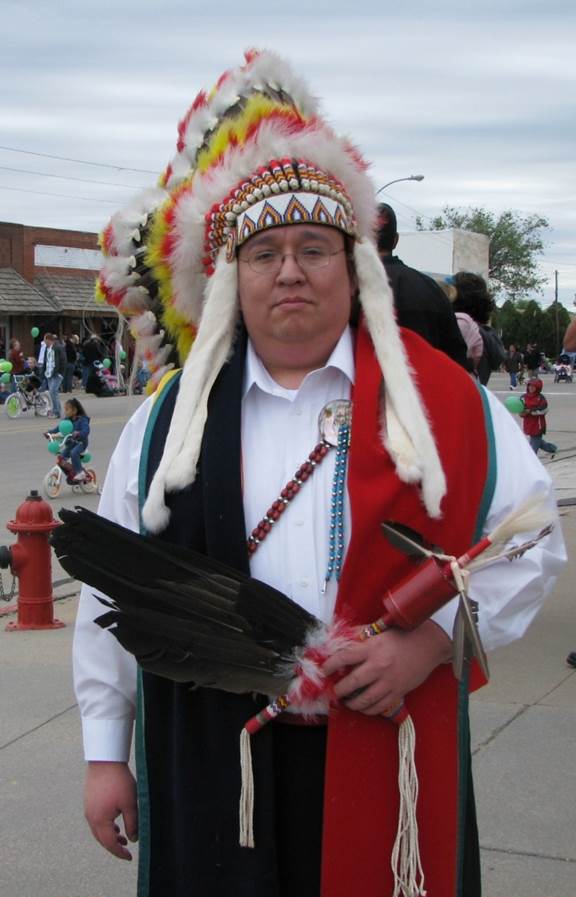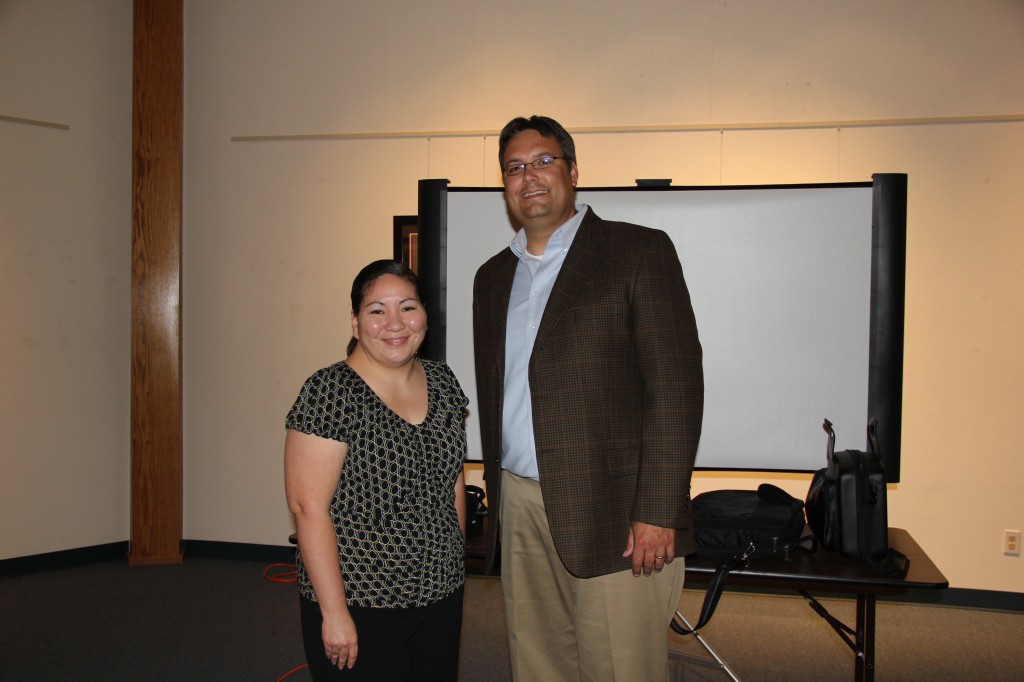Engaging the Kiowa Community: A Collaborative Approach to Sharing Research on Historical Consciousness and Intellectual Property Rights

Michael Jordan is Assistant Professor of Cultural Anthropology at Texas Tech University. In 2008, while a doctoral candidate at the University of Oklahoma, he received a Dissertation Fieldwork Grant to aid research on ‘Descendants’ Organizations and Cultural Heritage in Kiowa Society,’ supervised by Dr. Daniel Charles Swan. In 2013, he received the Engaged Anthropology Grant to return to his fieldsite and share his research with the community that hosted him.
In 2013, I received a Wenner-Gren Engaged Anthropology Grant to conduct outreach and engagement activities with members of the Kiowa Tribe of Oklahoma. The project built upon research that I conducted with Kiowa descendants’ organizations in 2008 and 2009. As outlined in my dissertation, “Reclaiming the Past: Descendants’ Organizations, Historical Consciousness, and Intellectual Property in Kiowa Society,” these grassroots organizations are primarily concerned with celebrating the memory of their nineteenth century ancestors and preserving and perpetuating Kiowa cultural practices that they deem “endangered.” The project consisted of two distinct components, each designed to increase awareness and stimulate debate regarding topics that are of concern to Kiowa descendants’ organizations and which have emerged as central to my own research.
The first component focused on the development of a collaborative exhibition at the Kiowa Tribe of Oklahoma’s Museum in Carnegie, Oklahoma. Interpretive material was developed in consultation with members of Kiowa descendants’ organizations and members of the Kiowa Cultural Preservation Authority, which operates the museum. I worked particularly closely with Amie Tah-Bone, Director of the Kiowa Museum, and Phil R. Dupoint, Kiowa Tribal Historian. The resulting exhibit, Reclaiming the Past, drew heavily upon interviews that I conducted during my dissertation fieldwork.

The exhibit consisted of seven text panels. An introductory panel discussed my dissertation research and introduced the themes that would be developed in the exhibit. A second panel addressed the topic of historical memory, focusing on the way in which members of the Kiowa community commemorate and celebrate figures and events from the late nineteenth century. Descendants’ organizations and their efforts to preserve Kiowa cultural practices and the Kiowa language were highlighted in the third panel. The next three panels focused on martial exploits, Kiowa naming practices, and painted tipis. War deeds, names, and tipi designs are all considered forms of intellectual property in Kiowa society. The panels documented how descendants’ mobilize their ancestors’ intellectual property in contemporary contexts. The final panel discussed my dissertation research and the current exhibit as the latest chapter in a long history of cooperation between members of the Kiowa tribe and anthropologists. Admittedly, it would be possible to develop an exhibit on any one of these topics and it is my hope that future exhibits at the Kiowa Museum will explore these themes in even greater detail.
The exhibit opening was held at the Kiowa Museum on Saturday, September 28, 2014 and was attended by over sixty community members. Kiowa elder Raymond Tongkeamha, a member of the Chief Satanta White Bear Descendants, opened the event with a prayer. Following this, I presented a talk, discussing the history of my involvement with the Kiowa community, my dissertation research, and my findings. A reception held to celebrate the opening of the exhibit offered an opportunity to answer community members’ questions about my research and to distribute copies of my dissertation to interested community members.

In addition to developing the museum exhibit, I presented a series of public lectures exploring aspects of my dissertation research. Early on, I decided to focus on the nexus of historical memory, materiality, and intellectual property rights. The talks examined how the descendants of nineteenth century Kiowa warriors honor their memory by creating works of art that incorporate their ancestors’ tipi designs and depictions of their martial achievements. I argued that through their artistry, descendants sought to assert their ties to prominent historical figures and to foster a vision of the past that highlights their ancestors’ contributions to the physical and cultural survival of the Kiowa people.
While one of the lectures was held in conjunction with the opening of the exhibit at the Kiowa Museum, the three remaining lectures targeted members of the Kiowa community who live outside the immediate vicinity of Carnegie, Oklahoma. I selected Anadarko, Norman, and Tulsa as venues for these lectures because each boasts a significant Kiowa population. The lectures were hosted by the Department of the Interior’s Southern Plains Indian Museum, the University of Oklahoma’s Fred Jones Jr. Museum of Art, and the Philbrook Museum of Art. In addition, the lecture in Norman was co-hosted by the Jacobson House Native Art Center. The lectures provided me with opportunities to share the results of my research with members of the Kiowa community who might not have an opportunity to view the museum exhibit.
While the focus of the Engaged Anthropology project was on disseminating the results of my dissertation research, it also paved the way for future collaborative endeavors. During the exhibit planning stages, I worked closely with members of the Kiowa Cultural Preservation Authority and the staff of the Kiowa Museum. As the project came to a close, we sought to harness the energy and momentum that we had developed. Ultimately, we decided to apply for a Smithsonian Institution Recovering Voices Community Research Grant. Furthermore, the museum exhibit and lectures heightened Kiowa community members’ interest in their nineteenth century ancestors and their intellectual property. The renewed interest in these topics is likely to translate into future research opportunities.
The success of my dissertation research hinged on the support of members of the Kiowa community and I will forever be indebted to the Kiowa people who shared their knowledge and insights with me and who made a place for me in their lives. I am likewise indebted to the Wenner-Gren Foundation, which along with the National Science Foundation and the Whatcom Museum Society, funded my dissertation fieldwork and then made it possible for me to return to the Kiowa community to share the results of my research.